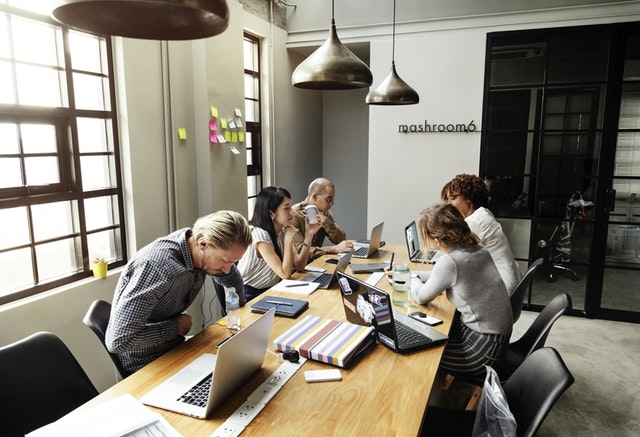5 Ways the Work Environment Has Evolved

Many companies that want to change the world know that their work environment plays a huge role in the success of their business. Office designs, layouts, and atmospheres can all affect the way employees work and collaborate. As standards in this area improve, workers have been demanding more from their place of employment. Here are five major changes to be aware of.
1. More Work Gets Done Outside of Work
The contemporary office stretches far beyond your finite commercial space. Today’s distributed workforces mean that your employees are more likely to get things done at home. Even if you don’t strictly encourage telecommuting, those who want to climb the ranks might go above and beyond outside office hours.
If you don’t want your commercial space to pale in comparison to the work-from-home alternative, then you have to be more accommodating when designing office interiors. In a world where people can use mobile devices to stay productive anywhere, uncomfortable commercial office furniture doesn’t exactly attract top talent.
2. Workplaces Are Getting Greener
Cutting down your energy footprint is great, but why not go all out? Adding leafy plants, succulents and other greenery to an office can make it far more welcoming. In addition to benefiting workers on a psychological level, plants can do everything from improving air quality, to serving as functional decor that makes office life seem less drab.
3. Textures Are In
It’s impossible to predict interior layout trends with 100 percent certainty. As more companies move towards minimalism, however, commercial office furniture consultants are also noticing a reactionary shift back toward fundamentals, such as texture. In other words, people are exploring organic materials, artistic elements and textured patterns to give their designs more variation.
Fortunately, the texture craze doesn’t mean that you have to get rid of those sleek workstations or streamlined credenzas you’ve just placed around the office. In fact, using textured design elements sparingly is a great way to heighten the effects of a low-key layout by contrast.
4. Branding and Mood Inform Color Choices
Classic offices of previous eras were dominated by standard browns, grays, and other ubiquitous colors. These design decisions were often based on material limitations.
Today’s interior planner can choose from anything they fancy. Better color matching technology, and the ability to print on materials like glass and improved furniture fabrication techniques mean that hue is truly a matter of preference instead of necessity.
5. Ergonomics Reigns Supreme
The most productive offices feature furniture selected for its ability to support its users. Instead of struggling to make do with shoddy chairs or uncomfortable desks, workers can enjoy a variety of custom pieces and models that accommodate their need for comfort and stability.
How is your workplace different than it might have been a generation ago? Want to stay on top of office design trends yet to come? Get informed by following us on social media.